Tag: Economics
-
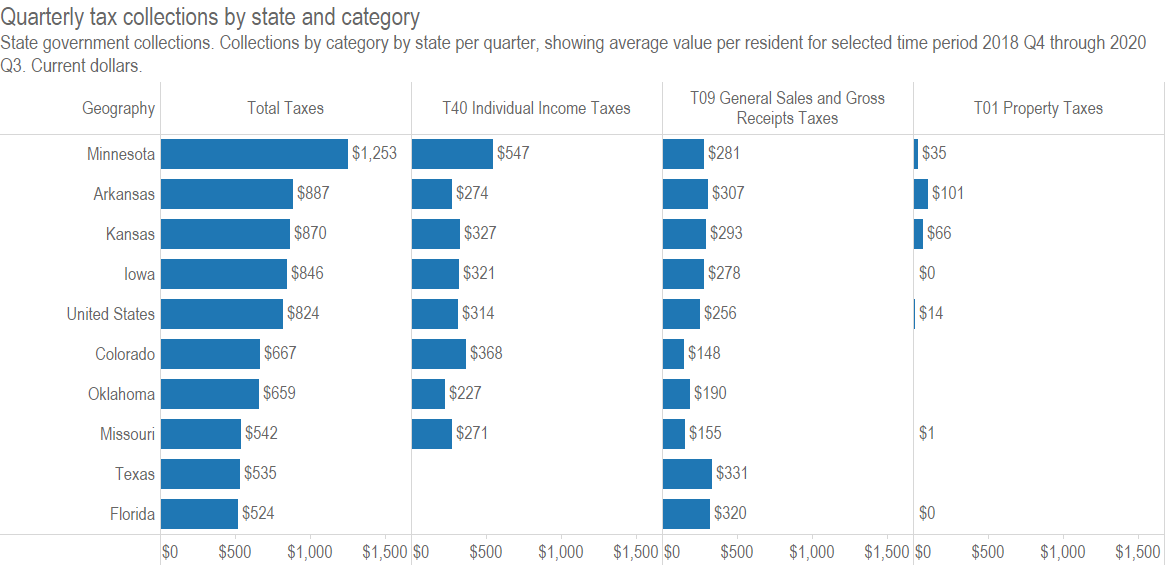
Quarterly state government tax collections
State government tax revenue has generally recovered since the second quarter.
-
Population growth in the states
Here is your Christmas Eve animated chart, showing population growth in the states during this decade. Besides viewing below, you can click here for a larger version.
-
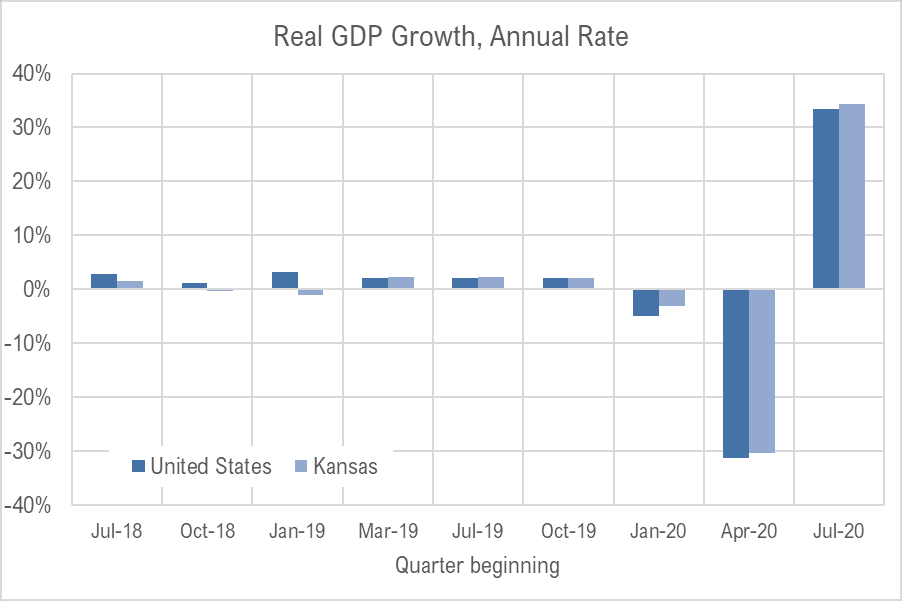
Kansas GDP
In the third quarter of 2020, the Kansas economy grew at the annual rate of 34.3 percent, compared to contraction of 30.6 percent in the previous quarter. GDP grew in all states, with Kansas performing in the middle.
-
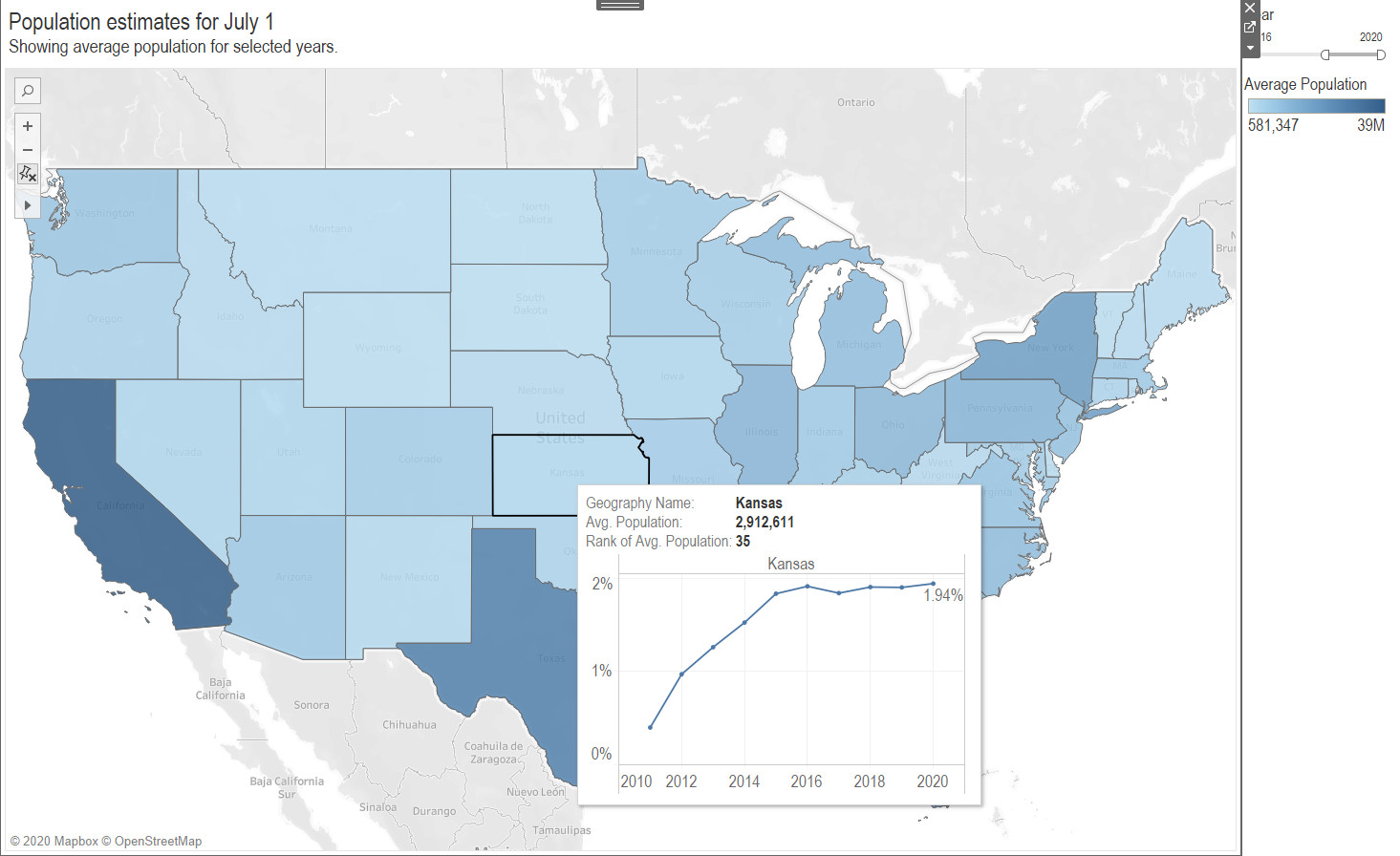
State population estimates for 2020
Compared to the nation and surrounding states, Kansas is growing slowly. An interactive visualization.
-

Kansas jobs, November 2020
In Kansas for November 2020, the labor force grew while the number of people working fell, resulting in a rise in the unemployment rate.
-
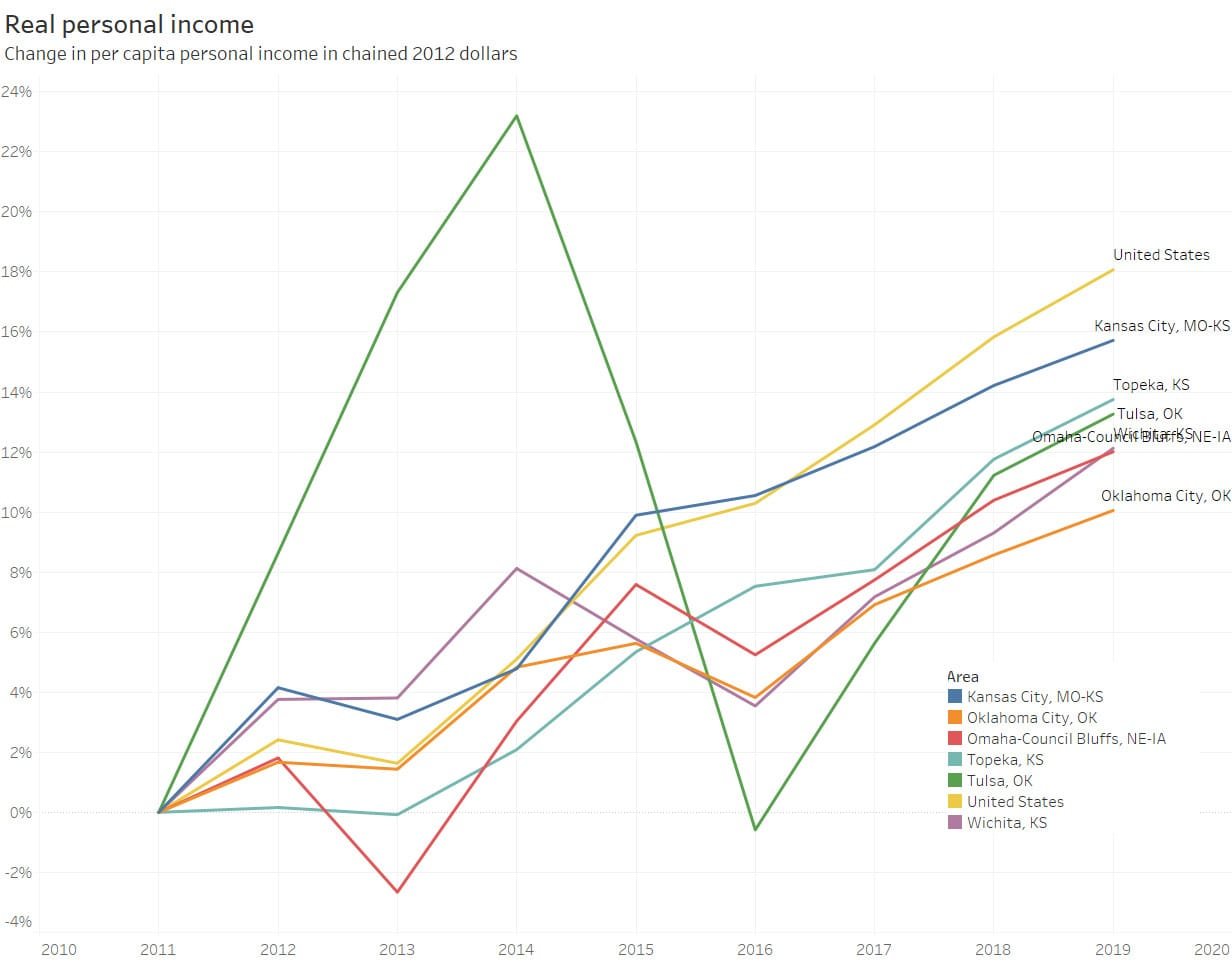
Real personal income in Wichita and other metropolitan areas
When adjusted for regional differences, per capita personal income in Wichita is relatively high. In recent years growth in per capita and total personal income has been slow, but better in 2019.
-
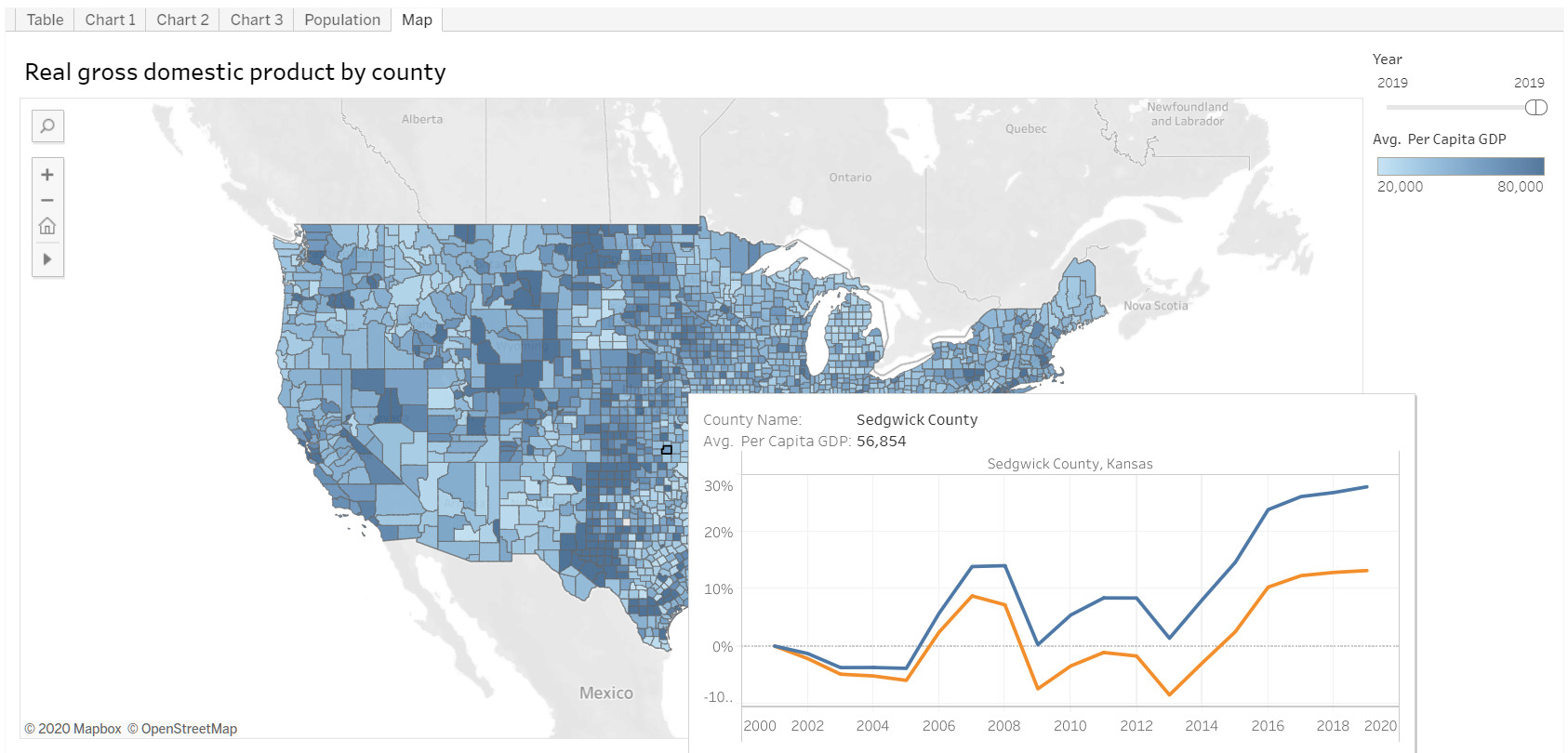
Real gross domestic product by county
Real GDP values by county, presented in an interactive visualization.
-
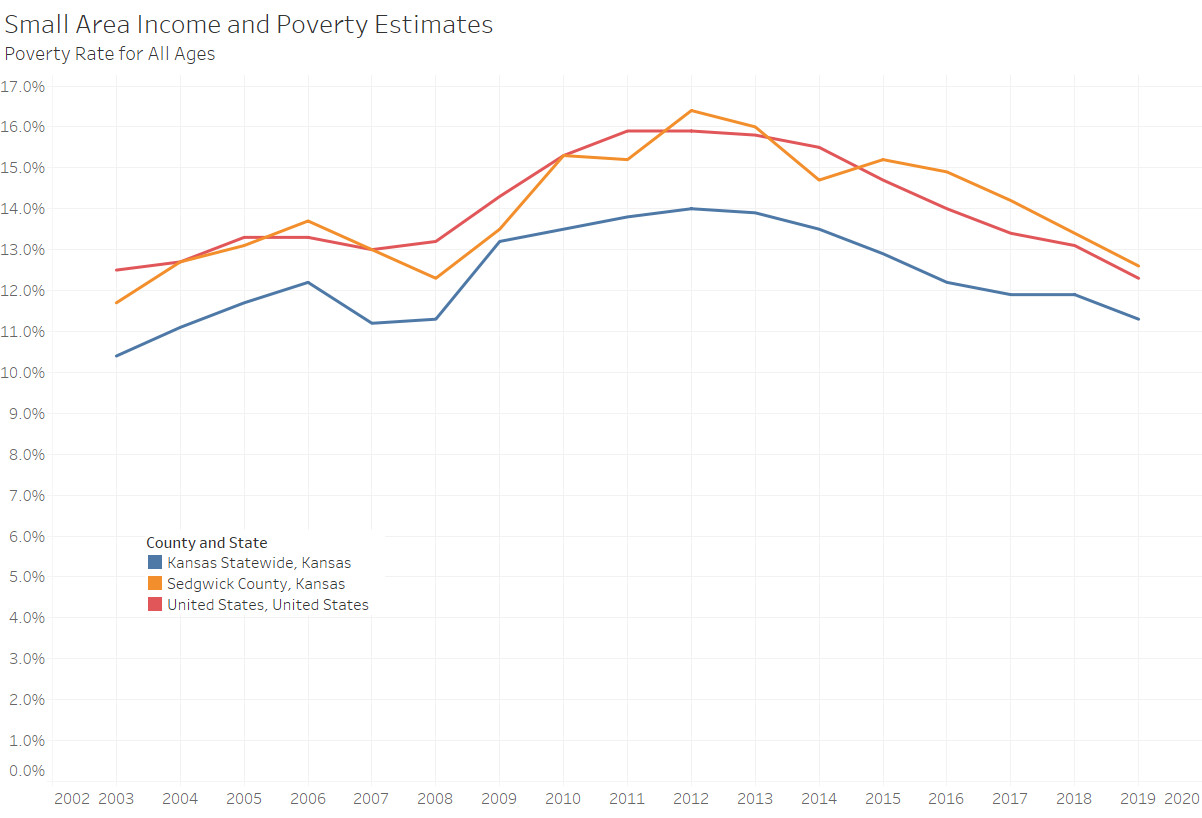
Small area income and poverty estimates
An interactive visualization of household income and poverty data for states and counties, now with data through 2019.
-

Monthly state retail sales
Monthly retail sales by state and major retail sector, in an interactive visualization.